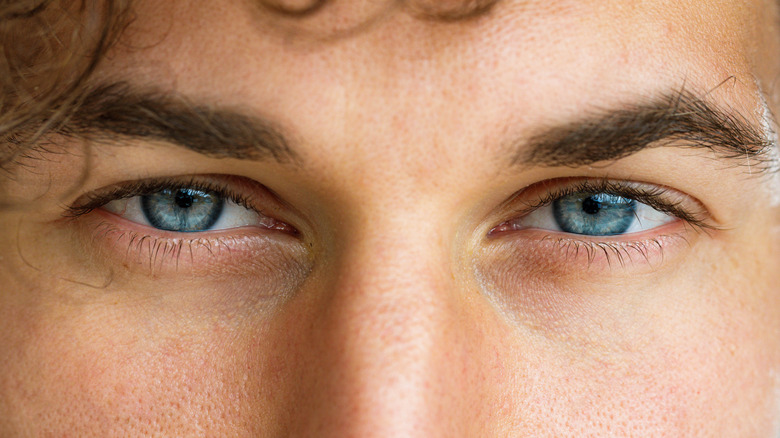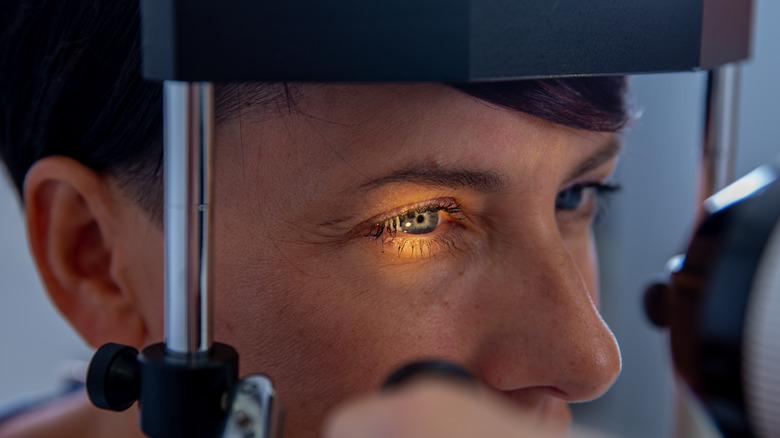People With Blue Eyes Are More Likely To Develop This Medical Condition
While the majority of people around the world have brown eyes, blue eyes may not be as rare as you might think. When it comes to eye color percentages, blue eyes come in second place right next to brown eyes, making up as much as 10% of the world's population, reports Medical News Today. In the U.S., that number jumps to approximately 27% — that's over one-quarter of Americans who possess baby blues.
Melanin is a natural substance that's responsible for the pigment in our eyes. Except in cases of albinism (via National Health Service), some degree of melanin can be found within the iris of most people, or the colorful ring around the eye's pupil. Melanin is brown in color, and people with brown eyes tend to have more of it, explains All About Vision. It's not that people with blue eyes have blue pigment within their iris; it's simply less melanin. Couple that with the way in which light hits and reflects off the eye, and that's what gives the eyes their robin egg-blue appearance. While blue eyes have been associated with a lower risk of certain health conditions, they have also been linked with a potential increased risk for others, specifically type 1 diabetes.
People with blue eyes may be more susceptible to type 1 diabetes
The connection between blue eyes and type 1 diabetes stems from the findings of a 2011 study published in Diabetes/Metabolism Research and Reviews. The study team examined the iris color of more than 280 Caucasian individuals within two specific areas of Italy who were diagnosed with type 1 diabetes. To compare, the researchers also looked at the iris color of nearly 300 participants who did not have the condition. It was found that having blue eyes proved to be a significant risk factor for developing type 1 diabetes.
Affecting approximately 5% to 10% of diabetes patients, the U.S. Centers for Disease Control and Prevention (CDC) explains that type 1 diabetes is an autoimmune condition in which the body self-attacks the pancreas and prevents the organ from producing adequate amounts of insulin. As a result, the body is unable to convert blood sugar into energy. Normally, insulin achieves this by facilitating the entry of blood sugar into our cells, but with nowhere to go, blood sugar accumulates in the blood. Mayo Clinic experts state that this can lead to excessive hunger or thirst, weakness, weight loss, increased urination, blurred vision, and more.
People with blue eyes are less prone to cataracts
Although experts have not yet identified any protective measures one can take against the development of type 1 diabetes, it can be effectively managed by monitoring one's blood sugar levels, implementing healthy lifestyle habits, and keeping up with routine physical exams (via CDC). If you believe you may be at risk for type 1 diabetes, be sure to consult your physician.
While people with blue eyes may be more prone to this particular condition, know that there are other health issues their eye color may actually protect against. For example, blue-eyed individuals have been known to be at a lesser risk of cataracts than people with dark eyes, notes All About Vision. Cataracts occur when the normally clear lens of the eye develops cloudy areas, according to the Cleveland Clinic. Approximately 17% of people worldwide experience vision problems due to cataracts, and while there are a number of contributing factors that can influence one's risk level, possessing blue eyes may not be one of them.



